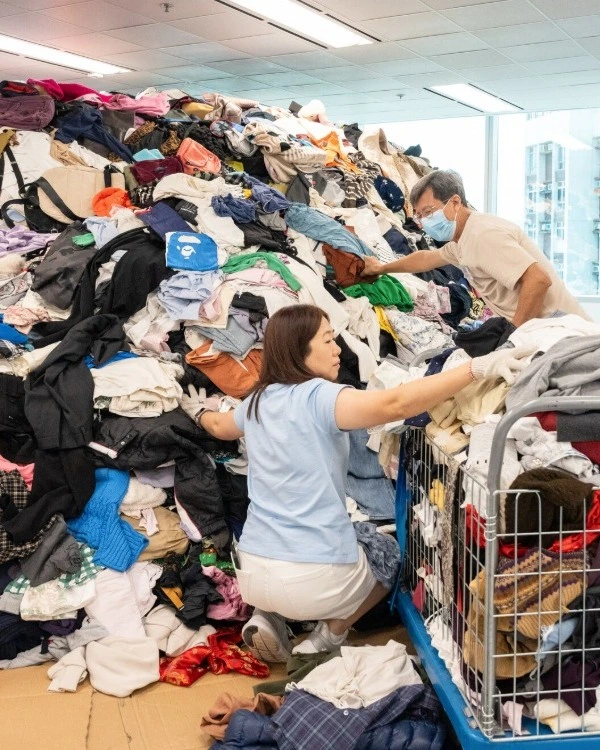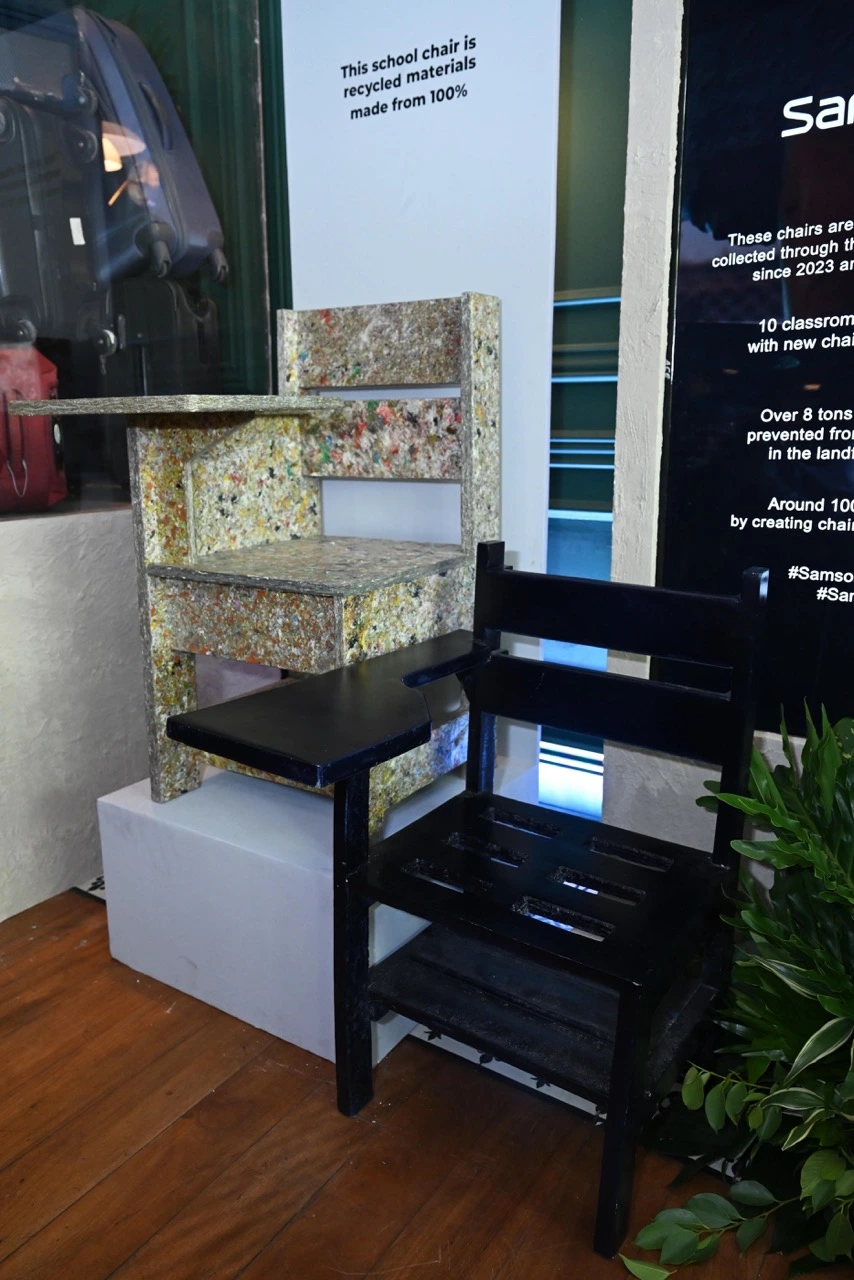Our clothes may look harmless, but many are made of plastic-based fibers that pollute oceans and release microplastics. Explore how fashion impacts the environment—and how brands are responding.
From our kitchens to our bedrooms, and even our closets, plastic is everywhere. One of the most toxic pollutants in the world, it’s likely present in your home, and more importantly, in our clothes. We may not realize it, but our online shopping hauls and fast-fashion sprees are major contributors to the environmental damage caused by synthetic material.
Sure, it’s easy to preach about avoiding plastic, becoming a sustainable consumer, and follow other green-minded advice. However, the reality is that plastic is everywhere, and because it is so widely used, avoiding it is nearly impossible. Plenty of call-to-action articles suggest ways to cut down on plastic use. But today, we’re talking about fashion—because, what we wear is part of the problem too.
READ ALSO: Woven Consciousness: The Role Of Artisans In Slow Fashion
What We Know About Plastic In Fashion
According to a report by Redress, a Hong Kong-based, Asia-focused environmental NGO committed to promoting circular fashion practices, 402 metric tons of textiles are landfilled daily in Hong Kong. That’s equivalent to 17,480 suitcases of discarded garments every single day. Of that 402 metric tons, only 25% of non-wearable textiles are made of 100% cotton, making them ideal for recycling.
The amount of non-recyclable textile waste is alarming. It’s a significant problem because many of these textiles, which cannot be recycled, are made of nylon, acrylic, or mostly polyester—synthetic polymers derived from plastic. According to a study by Changing Markets Foundation, 69% of the clothes produced globally is made from nylon and polyester. This suggests a high likelihood that much of the remaining 75% of textile waste in Hong Kong is composed of synthetic fibres.

The data is alarming because textile waste often contributes to microplastic pollution. According to an article by Earth.org, synthetic fabrics release microplastics during production and wear. The amount shed increases significantly when these garments are machine-washed. The resulting microplastics in wastewater contaminate the environment—a problem whose full scope scientists are only beginning to understand. Furthermore, textile waste is also dumped into the ocean, polluting seawater and eventually shedding microplastics that harm marine ecosystems and wildlife.
The US FDA also synthesized how microplastics enter our bodies through food. Microplastics and nanoplastics can infiltrate our food sources, largely due to environmental contamination during cultivation and rearing.
What Are Brands Doing?
In the fashion industry, transparency has long been one of the best-kept secrets among brands and fashion houses. After all, what customers don’t know won’t hurt them. According to Changing Markets Foundation, only 31 of the 55 brands they contacted were transparent enough to share data on their plastic use. However, some brands are more transparent than others about their efforts in minimizing plastic waste in production.
Samsonite, known for its durable and sleek luggage, is making efforts in the Philippines to minimize waste and support the community. Case in point: the Samsonite Annual Luggage Trade-in Campaign launched last June 30, 2025, in partnership with WWF-Philippines.

school chairs/Photo courtesy of Samsonite
Through this campaign, customers can trade in any pre-loved luggage—regardless of brand or condition—in exchange for a 35% discount on select Samsonite collections. The old luggage is then repurposed into school chairs by recycling partner Envirotech Philippines. This initiative not only reduces plastic waste but also supports underserved communities, with schools in Marinduque and Bataan already benefiting from the program.
Aside from Samsonite, Prada is also proactive in its efforts to recycle nylon—a material the brand is known for using extensively. The Prada Re-Nylon collection is made entirely from regenerated nylon, created by recycling and purifying plastic waste gathered from oceans, fishing nets, landfills, and textile fiber waste around the world. This material is transformed into new nylon fabric through a process of depolymerization, purification, and conversion into new polymer threads.

So What’s The Takeaway?
Plastic, at this point, is impossible to avoid. You can buy all the reusable containers you want, shop vintage, and make other eco-friendly lifestyle changes; however, that won’t stop corporations from using toxic materials. Sure, you can start being more environmentally conscious, but your efforts alone won’t save the planet.
Making conscious choices is important, but it is even more critical to question the policies that permit waste and microplastics to enter our ecosystems—and ultimately, our bodies. Awareness of environmental issues and the ability to identify major polluters are essential steps toward making informed, impactful decisions for the planet.
Banner photo by SHVETS production via Pexels.





